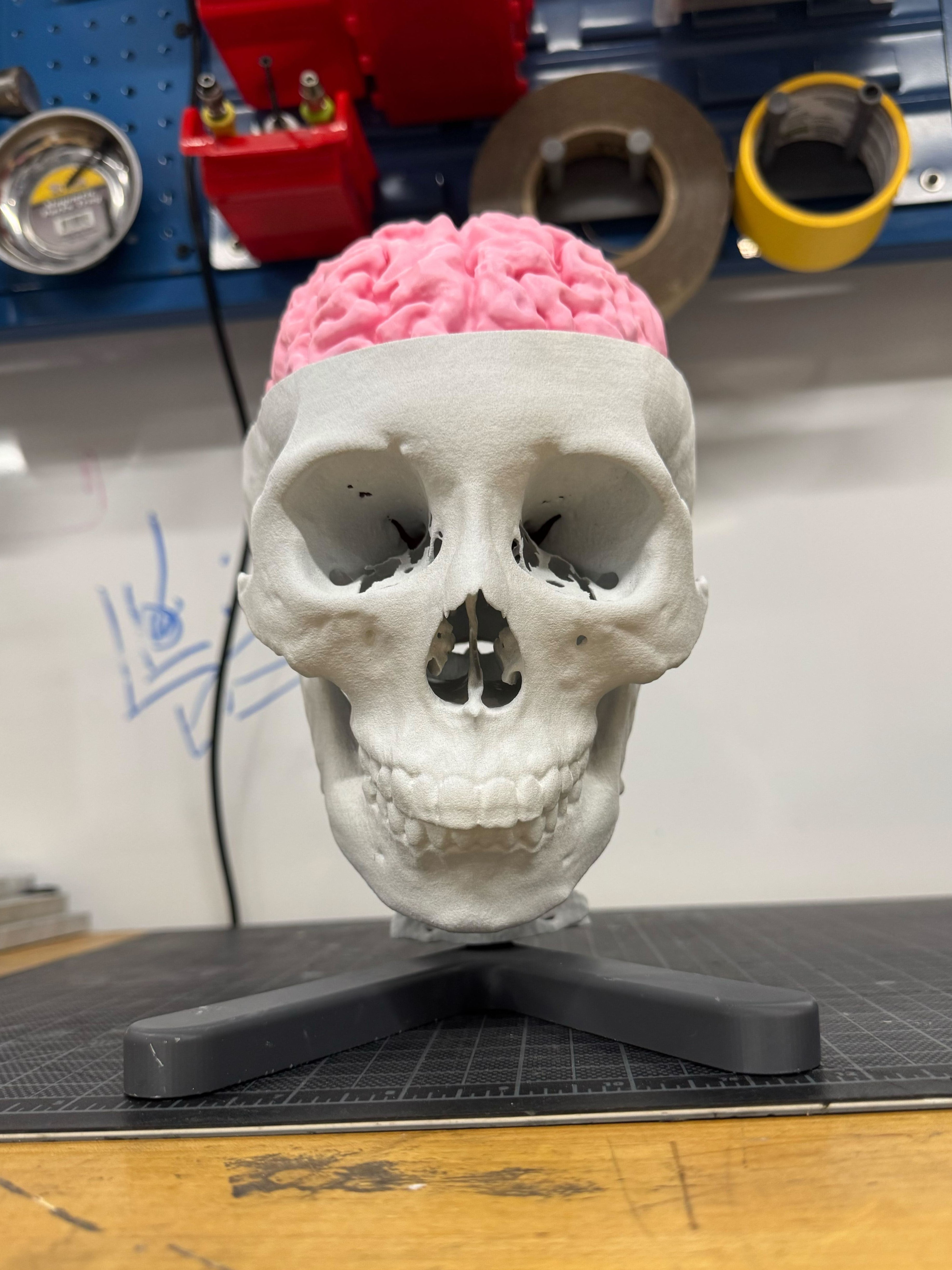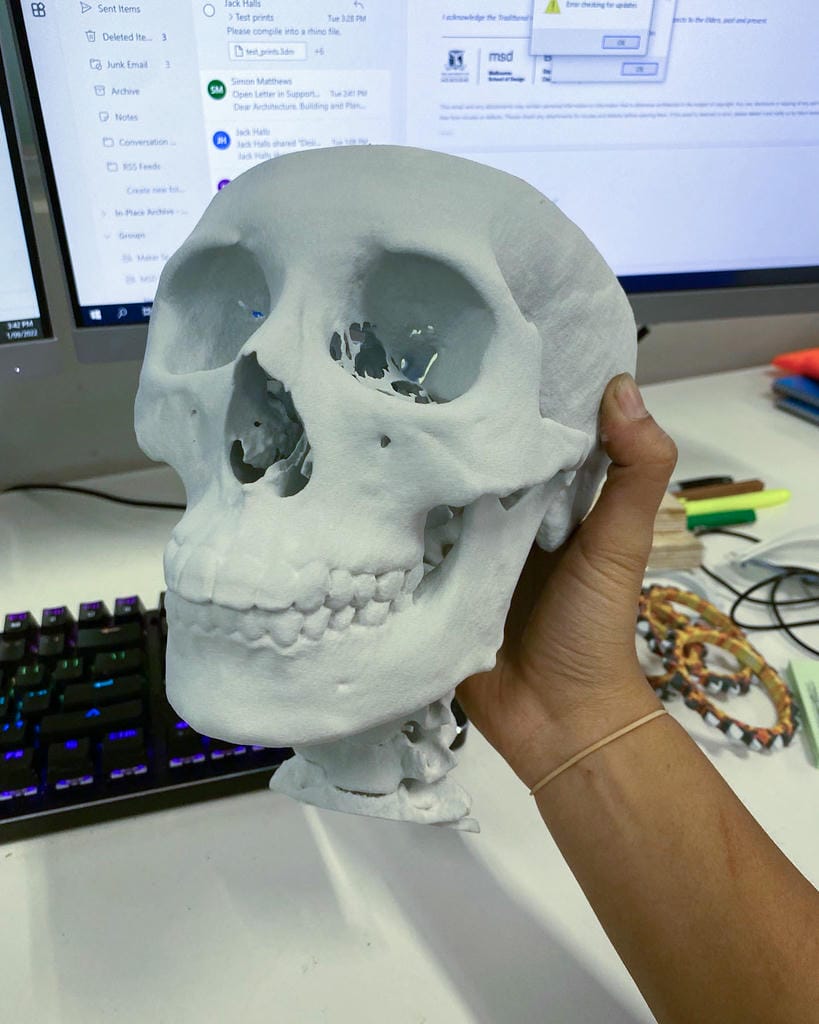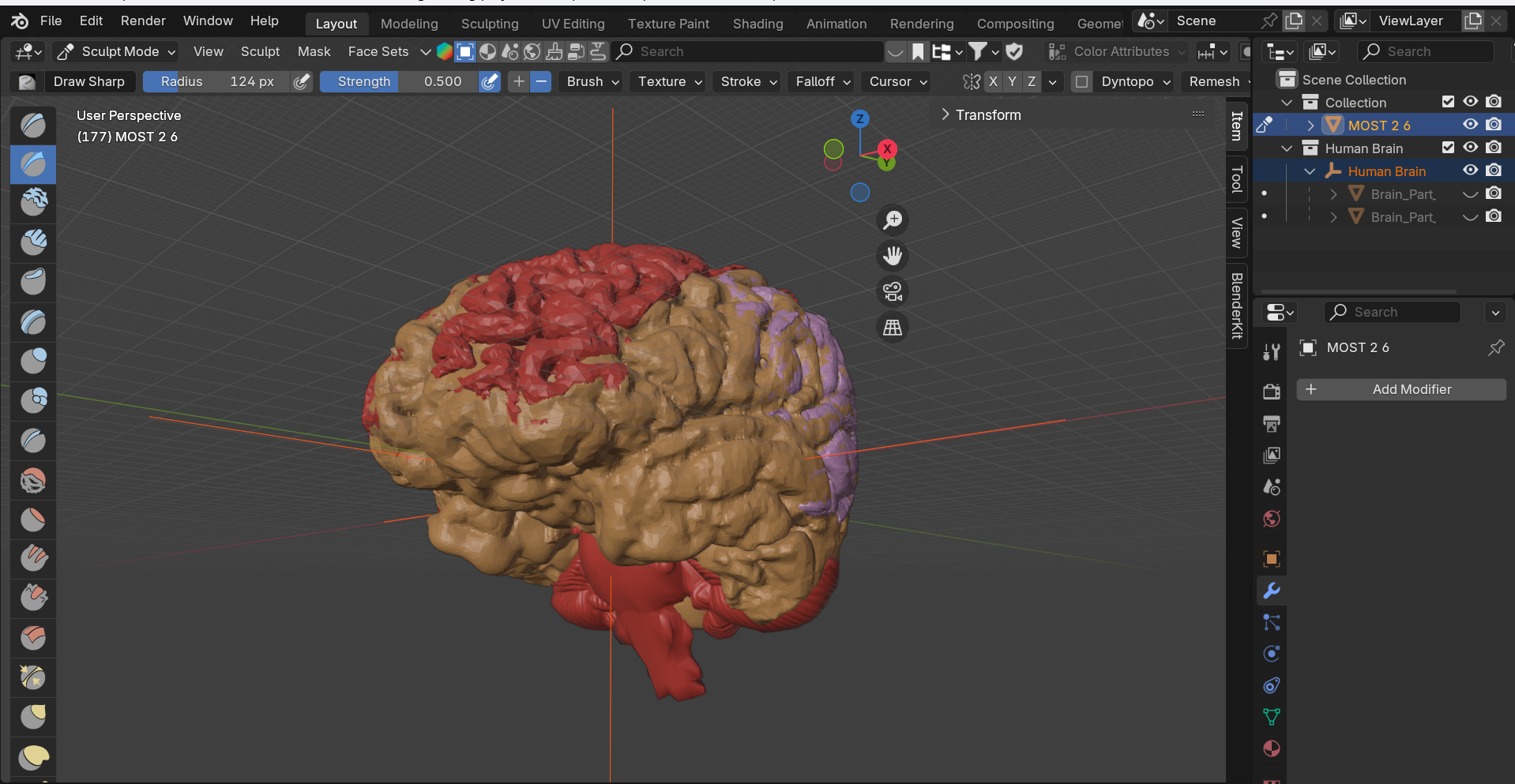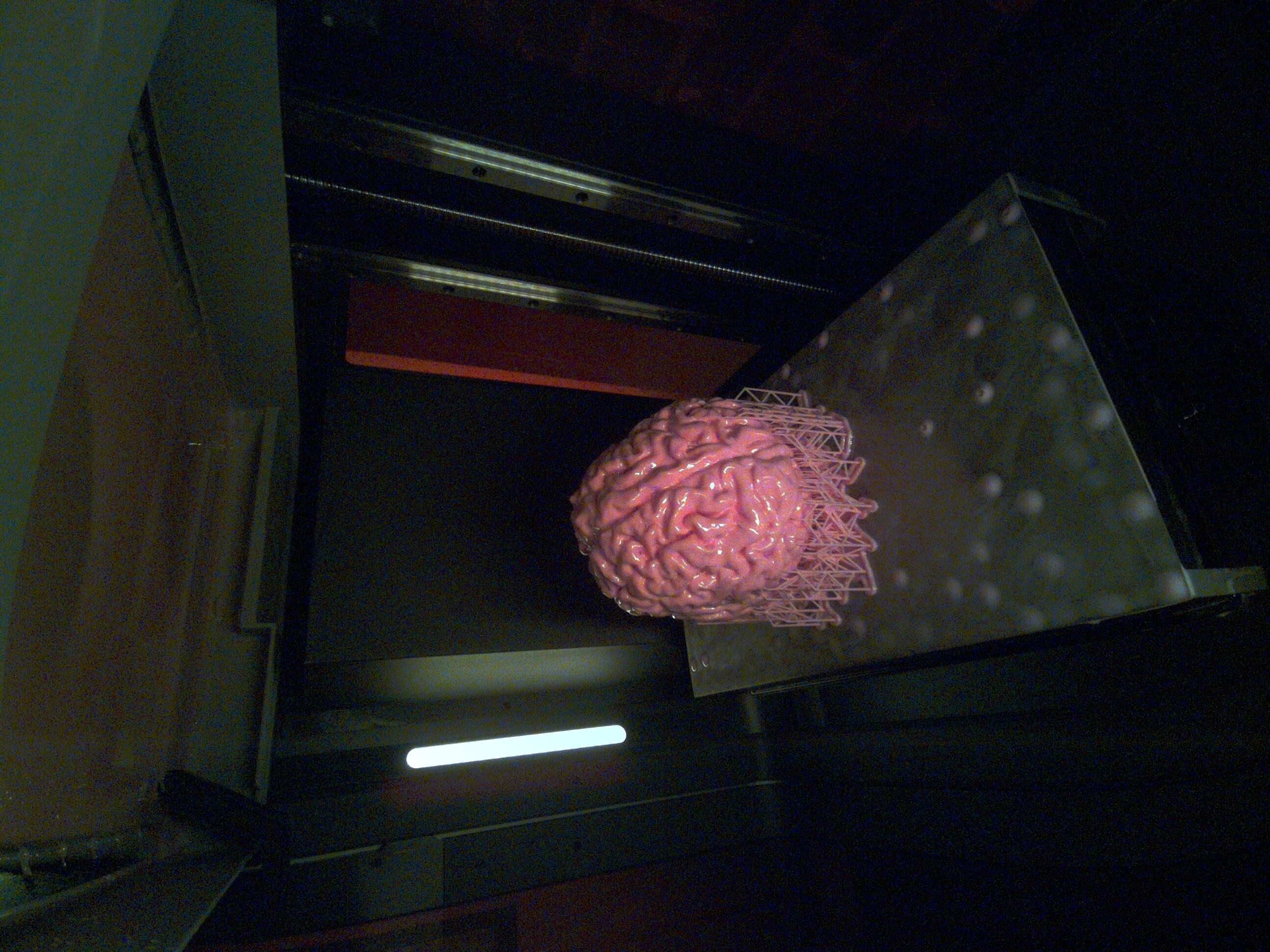3D print of my skull and brain
- CategoryFor fun
- Project dateSummer 2022
- Skills usedRhino, Blender, MJF/SLA 3D printing, CAD, slicing
Skull
In November 2022, I crashed my bike and hit my head on the concrete. I was picked up by MIT’s EMTs and rushed to the Massachusetts General Hospital in an ambulance. After getting 6 stitches to the chin and a CAT scan, I asked the radiologists for a copy of my scan so I could make a print of my skull.
After pulling off all 278 image files from a CD, I used InVesalius as a slicer to create a 3D model of my skull. I tried to also create a model of my brain, but unfortunately because I got a CAT scan, not an MRI, the soft tissues were not high enough contrast to separate out my brain from my spinal fluid very well. But no worries, I got around to making a print of my brain eventually!
I think it turned out pretty cool, with my top few vertebrae also appearing in the scan. And because I had gotten scanned with a mask on, you could actually see the metal piece that went over my nose in the scan!

But there was a problem here: because the scan stopped just short of the back of my head, there was actually a giant hole on the back of the skull. In order to patch this, I had to pull the model into Blender and do some sculpting to smooth out the back. And while I was at it, I blended out some strange noise in the model, especially on the teeth.
Finally, I used Rhino to detect and remove naked edges, transforming the noisy model into a continuous piece that could be printed. I used an MJF 3D printer, which had impressive detail and surface finish.
In order to provide support so that the print wouldn't tip over, I printed a base to hold it upright.
Brain
After I participated in an MRI study, I asked them for the .nii file of my brain scan. I used Materialise Mimics to segment the images and create 3D geometry from the 2D image files. Because the composition of the brain varies across the structure, I had to use different frequency cutoffs in different areas, then crop the area of interest. I exported four different sections of my brain, which I then imported into Blender. Using several sculpting tools, modifiers, and extensions, I was able to combine the geometry and dramatically downsize the noisy and geometry-dense file. I was then able to export the model and print it in colorable SLA resin.







